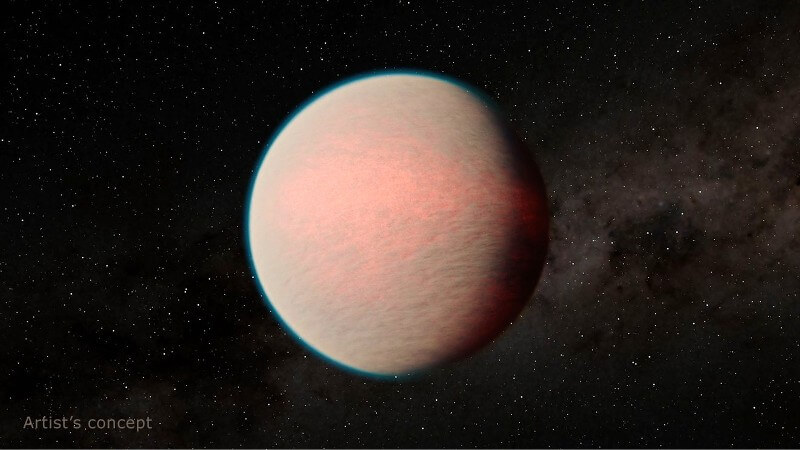A group of scientists has discovered new information about a “mini-Neptune,” a common type of planet in the galaxy, but one about which little is known. The scientists used NASA’s James Webb Space Telescope to observe a distant planet outside our solar system called GJ 1214 b. The planet appears to have a reflective atmosphere, and while it’s too hot to have liquid-water oceans, water in vaporized form could be a significant part of its atmosphere.
The planet, which is largely impenetrable to previous observations, is completely covered by some sort of haze or cloud layer, according to Eliza Kempton, a researcher at the University of Maryland and lead author of a new paper published in the journal Nature. She added that if it is water-rich, the planet could have been a “water world” at the time of its formation, with large amounts of watery and icy material.
To penetrate the thick barrier, the research team used a novel approach. They not only captured the host star’s light that has filtered through the planet’s atmosphere, but also tracked GJ 1214 b through nearly its entire orbit around the star. Using Webb’s Mid-Infrared Instrument (MIRI), they were able to create a kind of “heat map” of the planet as it orbited the star. The map revealed both the planet’s day and night sides, unveiling details of its atmosphere’s composition.
The research team found that the planet’s atmosphere is not composed mainly of lighter hydrogen molecules, which is a potentially important clue to the planet’s history and formation. It either lost a lot of hydrogen or was formed from heavier elements to begin with, more icy, water-rich material.
Moreover, the planet is much cooler than expected because its shiny atmosphere reflects a large fraction of the light from its parent star, rather than absorbing it and growing hotter. The new observations could provide deeper knowledge of a planet type shrouded in mystery. Measurements so far show mini-Neptunes are broadly similar to a downsized version of our own Neptune. However, little is known beyond that, as they don’t occur in our solar system.
Further observations will be needed to pin down more details about GJ 1214 b, and the formation histories of other planets in the mini-Neptune class. A watery atmosphere seems likely for this planet, but a significant methane component is also possible. Drawing broader conclusions about how mini-Neptunes form will require more of them to be observed in depth.
The James Webb Space Telescope is the world’s premier space science observatory, an international program led by NASA with its partners, ESA (European Space Agency), and CSA (Canadian Space Agency). Webb will solve mysteries in our solar system, look beyond to distant worlds around other stars, and probe the mysterious structures and origins of our universe and our place in it. MIRI, which views wavelengths of light outside the part of the electromagnetic spectrum that human eyes can see, was developed through a 50-50 partnership between NASA and ESA.

